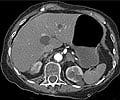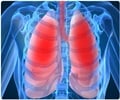A common smoking cessation therapy used to help reduce adverse events associated with nicotine withdrawal may actually increase the risk of death for smokers admitted to the ICU.
A common smoking cessation therapy used to help reduce adverse events associated with nicotine withdrawal may actually increase the risk of death for smokers admitted to the intensive care unit (ICU). In a new study presented at CHEST 2006, the 72nd annual international scientific assembly of the American College of Chest Physicians (ACCP), researchers found that smokers admitted to the ICU who received nicotine replacement therapy (NRT) during their stay had a higher risk of death than smokers who did not receive NRT.
“In some critically ill patients, the development of nicotine withdrawal symptoms can worsen their prognosis. As a result, NRT is given to active smokers in the ICU to prevent nicotine withdrawal symptoms,” said lead researcher Amy Lee, MD, Mayo Clinic College of Medicine, Minneapolis, MN. “The hemodynamic effects of nicotine may lead to increased heart rate, systemic arterial blood pressure, and constriction of the coronary arteries. Although these potential adverse effects of NRT have not been shown to worsen the prognosis of healthy volunteers and patients with stable coronary artery disease, they may be detrimental in critically ill patients.”Lee and colleagues examined the safety of NRT in the ICU by reviewing the medical records of 112 smoking patients admitted to the ICU who received NRT during their stay. Researchers compared patient outcomes between the NRT group and a control group. Among the patients who received NRT, 18 deaths (16.1%) occurred, compared with the 3 deaths (2.7%) in the control group. The hospital mortality rate was 21.4% for the NRT group, compared with 5.4% in the control group. Furthermore, when researchers controlled for severity of illness, NRT was found to be an independent risk factor for mortality (odds ratio 17.0).
There were no statistically significant differences in age, gender, ethnicity, and severity of illness measured by APACHE III prognostic model between the NRT and control groups. The median ICU length of stay for the NRT group was 24.4 (16.1 – 63.6) hours, compared with 22.6 (14.0 – 42.8) hours for the control group. The median hospital length of stay was 29.6 (18.3 – 127.1) hours, compared with 46.2 (19.8 – 117.3) hours for the control group.
“Although administering nicotine replacement therapy to smokers in the ICU is not a standard practice, some ICUs have nurse-driven protocols aimed at providing NRT for active smokers. We expect NRT to be more widely used in such ICUs,” said senior author Bekele Afessa, MD, FCCP, Mayo Clinic College of Medicine. Common signs of nicotine withdrawal include craving, irritability, depression, restlessness, and sleep disturbances. However, researchers caution that, because of other conditions that mimic nicotine withdrawal in the critically ill, to may be difficult to make an accurate diagnosis.
“Minimizing the effects of nicotine withdrawal in critically ill patients who smoke can present a significant challenge to the ICU team,” said Mark J. Rosen, MD, FCCP, President of the American College of Chest Physicians. “The findings of this study are intriguing and reinforce the need for additional research regarding the effects of nicotine replacement therapy on patients in the ICU.”
Source-Newswise
SRM











